Ventilation in the kitchen and its features
The kitchen, like no other room at home, needs effective ventilation. After all, there is not only an increase in humidity due to cooking, but also gas emissions. In this article we will look at what should be the ventilation in the kitchen with a gas stove, options for different air exchange schemes and their features.
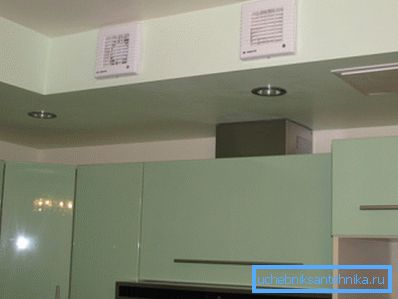
General information
If there is no ventilation in the kitchen or it works inefficiently, it can lead to a number of negative consequences:
- As a result of increased humidity, mold will begin to appear on the walls.
- Fat and soot will settle on the surface of finishes and furniture, respectively, the room will quickly lose its attractive appearance and become useless.
- Smells of food and burning during cooking will be spread throughout all areas of the home.
In addition, as mentioned above, when gas burners operate, gas emissions occur, which have a toxic effect on the human body. Thus, effective ventilation is primarily the safety of residents of a house or apartment, as well as the durability of kitchen furniture and decoration.
Therefore, the requirements for ventilation of a kitchen with a gas stove are the most stringent - the regulatory air flow here should be at least 70 cubic meters per hour.

Ventilation device
The construction of any house involves a ventilation device, which is planned at the design stage. As a rule, air vents are located not only in the kitchen, but also in the bathroom, as well as in the toilet. However, during operation of the house the system becomes clogged and the efficiency of air exchange decreases.
Therefore, residents have to think about additional measures that will ensure the inflow and outflow of air. To do this, first of all it is necessary to figure out what are the schemes of ventilation systems. In fact, all of them can be divided into four types:
| Natural | The inflow of fresh air and the outflow of the old is due to the pressure difference in the room and outside. |
| Inlet | Air is forced through the fan. At the same time fresh air fills the room and displaces the old one. |
| Exhaust | Air exhaust is carried out using a fan. The influx of fresh air occurs due to the pressure dilution inside the room. |
| Supply and exhaust | The most effective scheme, since both the air flow and the hood are forced through special equipment. |
Next, consider in more detail the arrangements for the arrangement of ventilation in all these schemes.

Natural ventilation
This scheme is found, as a rule, in the houses of the old building. With such a system, it is necessary to regularly check the draft in the ventilation ducts.
This can be done in two ways:
- Always under the ceiling is a grill for ventilation in the kitchen. To her need to attach a piece of paper. If he stuck, then there is a thrust and ventilation works well.
- You can bring a lit match or a lighter to the grille. If there is a thrust, the flame must deflect into the system.
If such a test showed that the ventilation is faulty, you can try to remove the grill and clean it from dirt and dust, as well as clean the duct, which is located in the access zone. If these actions do not help, you need to seek help from specialists.
Often there are cases that in the presence of traction in the system, the air exchange in the kitchen is still insufficient. In this case, it is necessary to equip the room with forced ventilation.
Tip! To prevent the air flow from turning, a non-return valve should be used to ventilate the kitchen. This device will also allow you to shut off the system if necessary and adjust the flow rate.
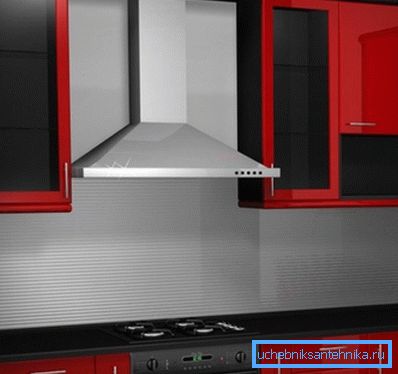
Exhaust
Exhaust ventilation system in the kitchen is one of the most common. First of all, it should be said that it is of two types:
- General - instead of the ventilation grille, a fan is installed, which forces air flow into the duct.
- Local - an exhaust device (exhaust) is installed above the stove, which with the help of a fan draws out all the emissions of fat, steam and gas, preventing them from spreading around the room.
The most effective is the ventilation in the apartment in the kitchen with a hood. Most often it is a dome-shaped structure, which is connected to the general ventilation with the help of an air duct.
The section of the duct for ventilation in the apartment in the kitchen can be square or round. The most common is the duct 130x130 mm. If its axis is offset relative to the axis of the vent, the connection is carried out using a corrugated pipe. The hood itself can be attached to a wall or to a wall cabinet.
In order for polluted air to leave the premises, clean air must come from somewhere. If plastic windows are installed in the kitchen, then surely there are problems with the influx of clean air.

Solve this problem will help the inlet valve, which can be installed with their own hands in the wall.
In addition to providing access to fresh air in the room, this device, as well as a non-return valve, performs several other functions:
- Allows you to adjust the intensity of the incoming air flow.
- Filters incoming air.
- Allows if necessary to close the ventilation in the kitchen.
After installing such a valve, the efficiency of air exchange will increase even more.
Tip! If the apartment has a kitchen with a ledge of ventilation, you can visually hide it using the cabinet. The best option in this case is custom-made furniture.
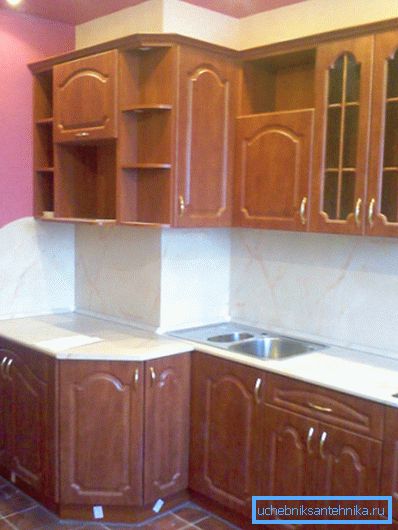
Inlet
Forced ventilation itself in the kitchens is quite rare. As a rule, it works in conjunction with the hood, resulting in a supply and exhaust system.
If there is no exhaust before installing the inlet equipment, it is necessary to make sure that there is good traction in the overall system. Otherwise, polluted air will be mixed with clean and spread to other areas of the house.
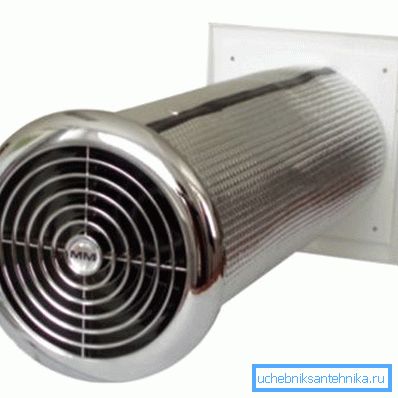
If the outflow of air is well organized, it is easiest to ensure the forced flow with a special fan. This device looks like a supply valve.
The most advanced fan models are equipped with temperature and humidity sensors, so they can work automatically. Some of them even have the function of heating the air. Despite the fact that the price of such devices is higher, they are a profitable purchase, as they allow to reduce heating costs in the winter period.
Installation instructions for such fans are quite simple:
- First of all, you need to determine the place where the fan will be located, and drill a hole in the wall according to the diameter of the device’s pipe.
- Then install the device in the hole and fill the space between the wall and the nozzle.
- On the outside of the wall, a protective grid must be installed.
- After that, according to the instructions from the manufacturer, the device is connected to electricity.
This completes the installation process. The most difficult thing in this operation is to drill a hole of the desired diameter.
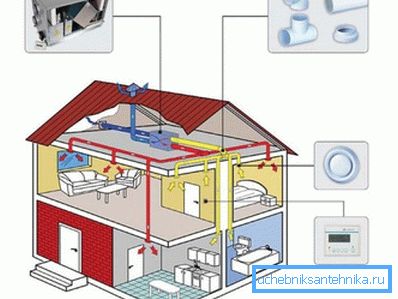
Tip! Ventilation of the kitchen in a private house, as a rule, is planned at the construction stage. In this case, the best option is a common supply and exhaust system. The project of such ventilation must be carried out by specialists.
Conclusion
Ensure effective ventilation in the kitchen in many ways. The most common option is an exhaust system with a local exhaust over the stove. Under all conditions of its implementation, such ventilation will ensure the comfort and safety of staying in the kitchen in the process of cooking.
From the video in this article, you can learn some additional information on this topic.